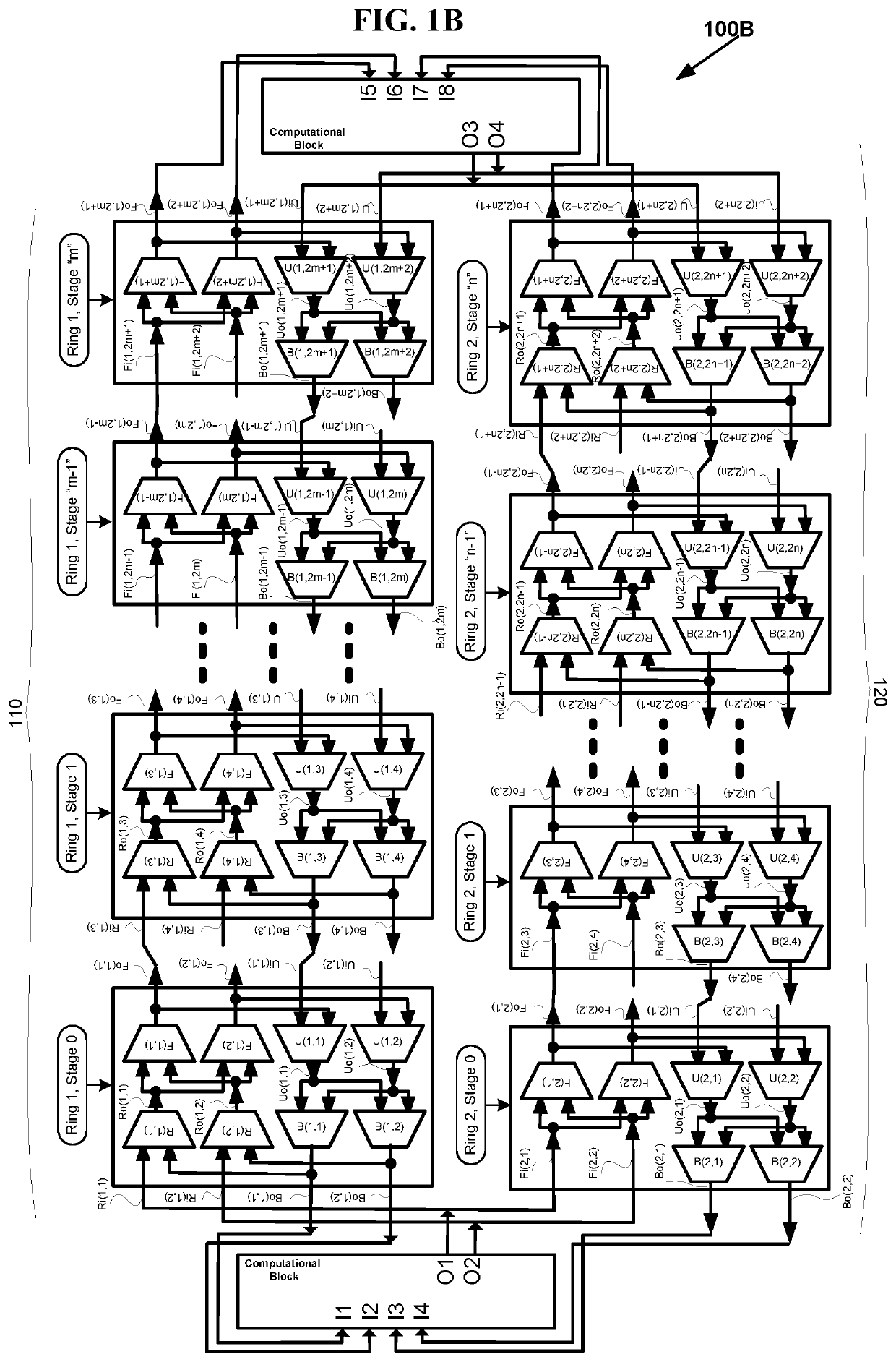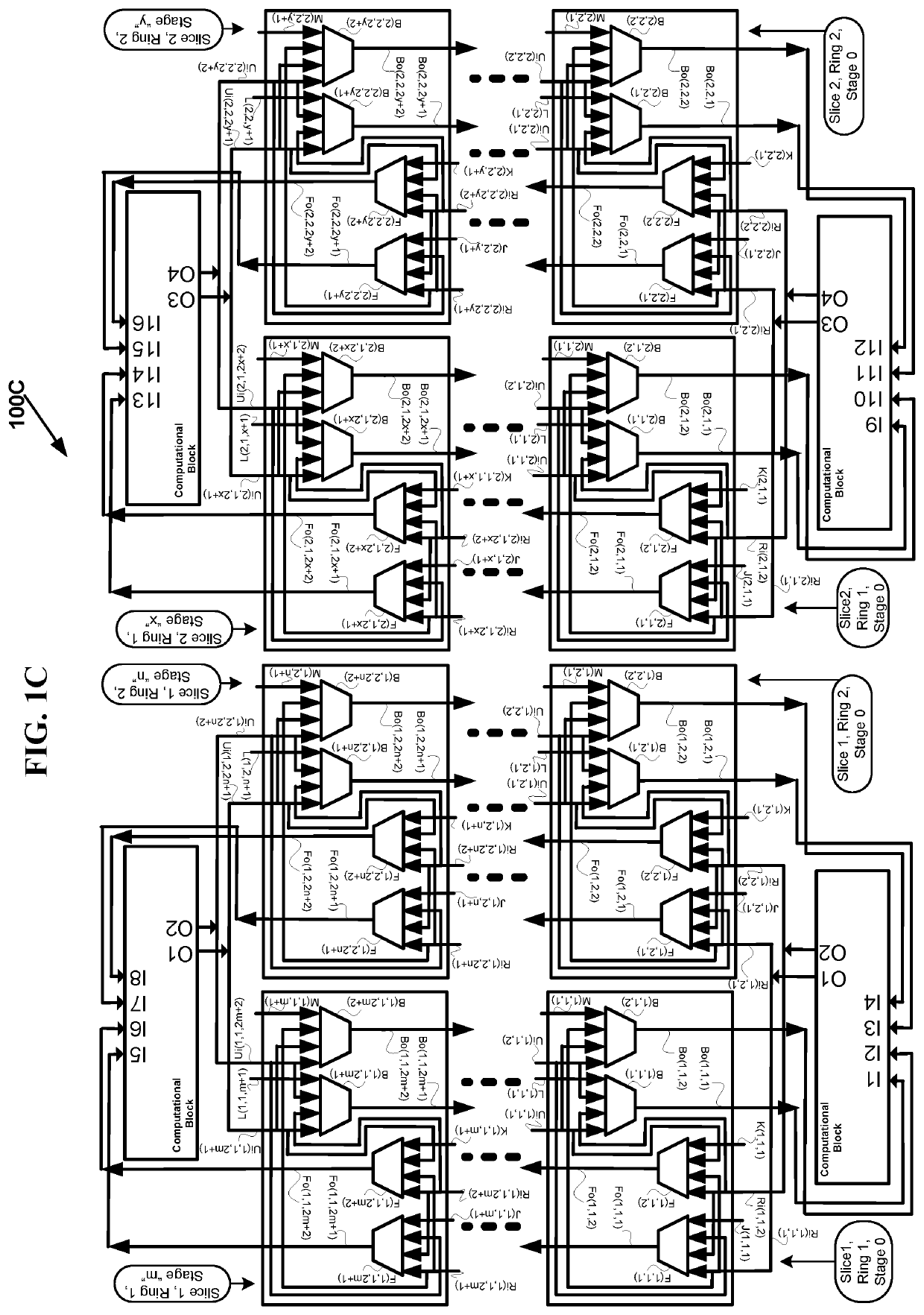Automatic multi-stage fabric generation for FPGAs
a fabric generation and multi-stage technology, applied in the direction of transmission, electrical equipment, etc., can solve the problems of increasing power consumption, increasing the latency of signals affecting the maximum clock speed of operation, and inefficient interconnection networks in integrated circuits, etc., to achieve low cross points, reduce power consumption, and reduce the effect of power consumption
- Summary
- Abstract
- Description
- Claims
- Application Information
AI Technical Summary
Benefits of technology
Problems solved by technology
Method used
Image
Examples
Embodiment Construction
[0074]Fully connected multi-stage pyramid networks are an over kill in every dimension such as area, power, and performance for certain practical routing applications and need to be optimized to significantly improve savings in area, power and performance of the routing network. The present invention discloses several embodiments of the optimized multi-stage pyramid networks for practical routing applications along with their VLSI layout (floor plan) feasibility and simplicity.
[0075]The multi-stage pyramid networks considered for optimization in the current invention include: generalized multi-stage networks V(N1,N2,d,s), generalized folded multi-stage networks Vfold(N1,N2,d,s), generalized butterfly fat tree networks Vbft(N1,N2,d,s), generalized multi-link multi-stage networks Vmlink(N1,N2,d,s), generalized folded multi-link multi-stage networks Vfold-mlink(N1,N2,d,s), generalized multi-link butterfly fat tree networks Vmlink-bft (N1,N2,d,s), generalized hypercube networks Vhcube(N...
PUM
 Login to View More
Login to View More Abstract
Description
Claims
Application Information
 Login to View More
Login to View More - R&D
- Intellectual Property
- Life Sciences
- Materials
- Tech Scout
- Unparalleled Data Quality
- Higher Quality Content
- 60% Fewer Hallucinations
Browse by: Latest US Patents, China's latest patents, Technical Efficacy Thesaurus, Application Domain, Technology Topic, Popular Technical Reports.
© 2025 PatSnap. All rights reserved.Legal|Privacy policy|Modern Slavery Act Transparency Statement|Sitemap|About US| Contact US: help@patsnap.com



